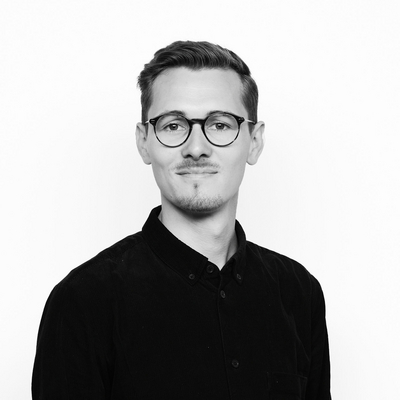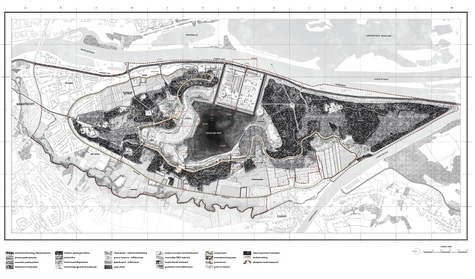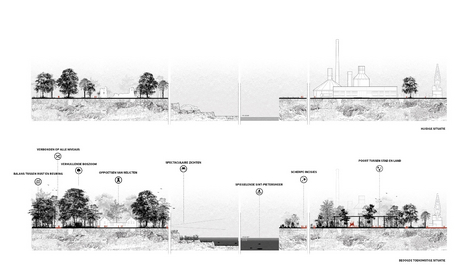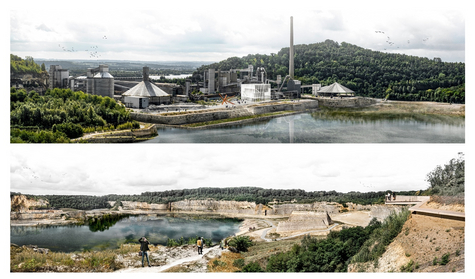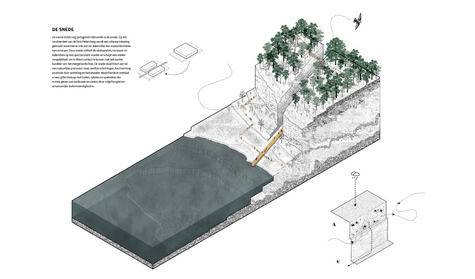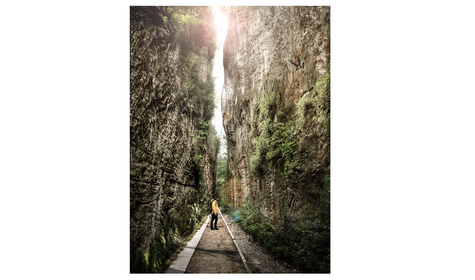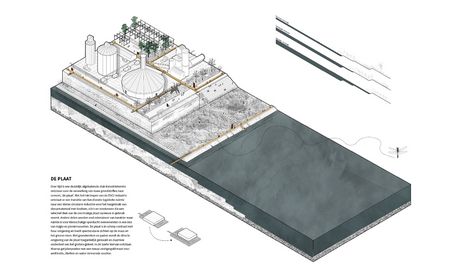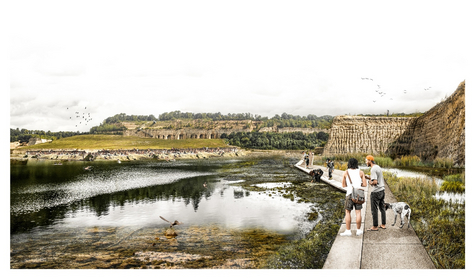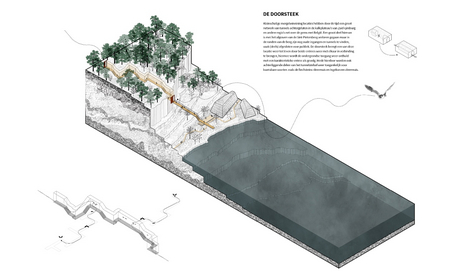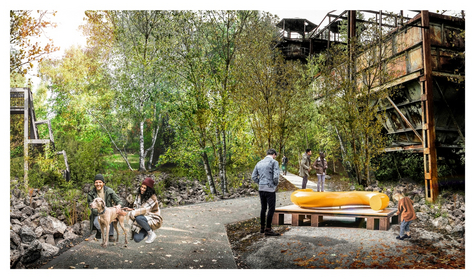Kasper Neeleman
VAN GROEVE NAAR BERG
FROM QUARRY TO MOUNTAIN
The future of Sint-Pietersberg after 100 years of intensive exploitation
For centuries, the Dutch landscape has been exploited. Peat extraction on the moors, gas extraction in Groningen, and the mining industry in East Limburg have left deep traces in our landscape. Following these exploitation landscapes, ENCI (First Dutch Cement Industry) grew into a national point of pride with the ENCI quarry on Sint-Pietersberg at its core. With large-scale limestone extraction from southern Limburg, the company claims to have been at the forefront of post-war reconstruction in the Netherlands. Despite fierce resistance, the local population has turned a blind eye to how the Sint-Pietersberg has disappeared bite by bite in sacks of cement. What remains is a large void in the heart of Sint-Pietersberg, the hollow mountain of Maastricht. Since its closure in 2020, persistent economic problems and conflicting interests have led to a frugal and unambitious transformation plan. After decades of isolation, another isolated spot at a stone's throw from the city threatens to emerge. A missed opportunity.
Over time, major spatial challenges have arisen because the relationship with Maastricht, the Meuse, and the adjoining Jeker valley has been lost. From Quarry to Mountain explores the potential of the entire Sint-Pietersberg as an integral landscape task as a zone between city and landscape. A unique landscape typology as an alternative to the rigidly designed city parks or extensive nature reserves. An intermediary between city and countryside that gives shape to urgent tasks in the field of water and nature development, but in which a liveable and accessible landscape for the region can also be created.
In light of the challenges facing the region, the entire Sint-Pietersberg can be revitalised as a multifunctional landscape park that is firmly anchored in the landscape with the former ENCI quarry as its beating heart. A park where nature is not erased or isolated, but opens up to the city and the region. It facilitates the interaction between nature and city — and at the same time provides a robust landscape that is committed to the development of existing and new biotopes. New interventions will create a collection of interventions that will connect existing and new functions and and reinforce the characteristic landscape substrate. Much attention is paid to optimal connections between city and mountain. Recognisable entrances provide access to the park and recreational routes lead along historical estates, marl caves, and forgotten valleys. For residents of the surrounding residential areas, the park and the larger landscapes are suddenly accessible thanks to the wealth of paths that connect to the neighbouring city.
Within the great variety of landscapes, selective interventions expose the typical grove landscape. This activates the park, enhances accessibility, and creates opportunities to create a new climate for plants and animals to settle. These projects act as catalysts within the development of the park with distinctive designs that make the landscape experienceable in its pure form. They showcase the unique quality in all its beauty with spectacular views, grand steep walls, hidden forest paths and carefully designed areas. This offers opportunities for an adventurous and diverse new landscape that is characterised by a wide variety of gradients, from intensive to extensive and from natural to artificial. The ultimate link between city and landscape, where urban activities alternate with total stillness and ruggedness.
Graduation date: 24 november 2021
Graduation committee: Pierre-Alexandre Marchevet (mentor), YttjeFeddes, Hannah Schubert.
Additional members for the exam:Harma Horlings, Mirte van Laarhoven.
